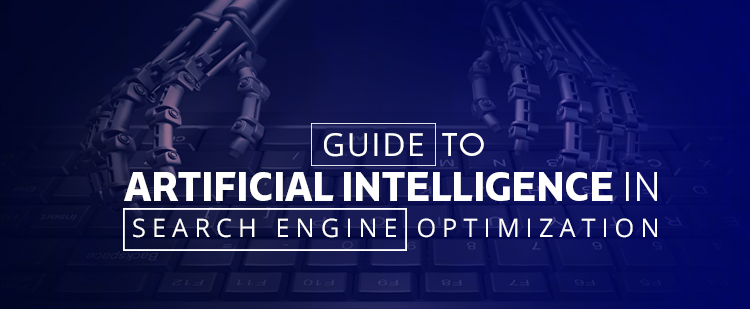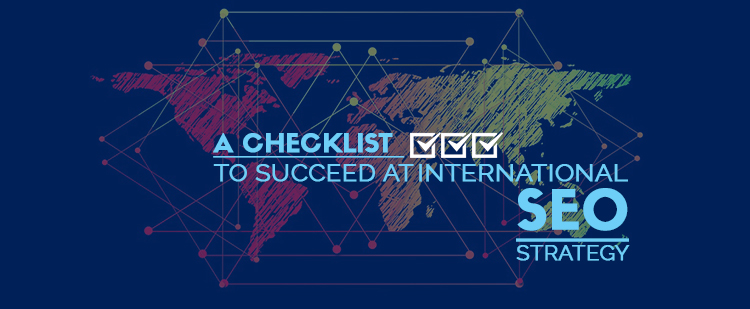Most of the concepts surrounding AI are based on speculation collected from search engine behavior and patents. Unfortunately, misconception gives rise to fear and this has lead to the current situation where many are unable to utilize AI in favor of SEO. Before we delve deeper into the subject, we need to know what AI is all about.
What is Artificial Intelligence in SEO?
Artificial Intelligence, unlike popular belief, is not a static formula. It is a continually developing system that has been designed to identify, sort and present the required data to meet user demand at that particular point of time from available variables that go far beyond the keywords typed.
How is AI changing SEO?
The year 2015 saw the introduction of RankBrain by Google to its algorithm chart thereby cementing the significance of Artificial Intelligence in SEO.
3 years down the line and search marketers are using AI to uncover new insights, automate labor-intensive tasks to offer an entirely new level of personalization to end users. The AI revolution is real, and it is happening. The significant areas where AI is changing SEO include:
- Web Development
- On-Site Content Display
- Ads
- Testing
- Interactive Buttons
AI and Machine Learning
AI and machine learning are not the same. Machine learning is a subset of AI. It relies on algorithms to collect data from the existing surrounding to take actions without being explicitly programmed to do so. In other words, they rely on their experience to deliver the desired results. For example:
1. Google uses machine learning to analyze the context of the content to offer better search results.
2. Amazon’s Echo analyses the user’s behavior and of other similar customers to provide new product ranges to choose.
3. Apple uses machine learning to increase the security of the device whereby the user’s face and fingerprints are recognized to unlock the hardware.
4. Facebook uses machine learning to identify the user image and their context.
How Will AI and Machine Learning Impact Content?
Content that fails to engage is no longer of any importance. “Content is King” is an outdated adage. The main focus is on creating a content that “engages” the end users and leads them to go for the services offered and the products displayed.
For example: to improve user experience, RankBrain interprets the environment from which the content is derived and thereby aims at providing better search results.
The goal is to offer search results that are matching to the closest answer to the query enquired. If the content generated for SEO purpose fails to live up to the need of the time, it will get lost amidst thousands of contents created daily. To step up and become visible, the content has to be “concept-related content” rather than “keyword-related content.”
How to use AI for SEO?
In this tricky environment, it becomes equally important for the SEO professionals to survive the challenges thrown at them. The following 5 strategies can change your game plan completely:
1. Keyword Optimization through keyword gathering, grouping and generating exemplars.
2. Use of Cluster Analysis & Predictive Analytics. Regroup your content on a single chosen topic and use the trends to predict the user demand to arrive at the search results.
3. Leveraging Customer Reviews to the hilt. There is nothing better than authentic customer feedback to create better awareness and higher page ranking.
4. Utilizing the available Customer Data to predict shoppers buying habits.
5. AI powered Chatbots are a great way to attract customers towards a sale.
AI SEO software and tools
The popular AI SEO software and tools can be summarized as mentioned below:
- Acrolinx – For analyzing and optimizing quality content
- Automated Insights
- One Spot – For customizing marketing channels
- Narrative Science – For generating immersive narratives from the data available
- Market Brew – For figuring out SEO rankings
- CanIRank – For SEO strategy formulations
- Albert – Use AI for online marketing tricks
- Pave AI – For analyzing Google Analytics
Simple AI strategies in SEO for amazing results
AI strategies are not always complicated. Gooogle’s RankBrain aims to offer the best possible search as per the query generated. To make sure that your SEO tactics attract the attention of RankBrain, keep in mind the following attributes:
- Mobile Friendly Pages are the key.
- Page Speed determines the success rate of your website. A slow loading webpage irks the customer and affects their attention span.
- Controlled Bounce Rate.
- Improved Dwell Rate.
- Enhanced Click Through Rate (CTR).
- Use more of Latent Semantic Indexing keywords.
- Related Internal & External Links.
- Structured Data Usage rather than random information available
AI and Link Building
At present, AI has not reached that stage where they can build links for your content. However, it can assist you at each stage of content planning.
Use AI for data collection through natural language processing. This will help to determine whether the information collected is genuine and relevant or not.
AI can also be used for site analysis to determine whether the site in question will have an impact on the page ranking or not.
Smart Tips for Improving Your AI based SEO
An effective SEO strategy takes time to develop and even more significant time to show favorable results. Data and data analysis is an integral part of any SEO strategy.
However, the human brain can process so many data available at any given point in time. To maximize the data crunching, you need AI.
Artificial Intelligence based SEO offers refined and better search ranking results. It can gather data, identify cross-selling audience segments and follow it up by determining the relevance and effectiveness of the content.
How Can AI Improve Your PPC Campaigns?
Give your PPC campaigns a boost with AI. The trick lies in using the AI to carry out repetitive tasks, which is a full-time job in itself. Use AI to monitor and fine-tune paid ads. To improve your PPC campaigns through AI opt for the following measures:
1. Opt for dynamic ads that show different ads to different users based on their preference and purchase history.
2. For any PPC campaign to be successful, the ad delivery has to be at the right time to the right people. AI helps to optimize ad delivery.
3 .Instead of manual bidding, make use of automated bidding with AI.
4. It is not necessary to use AI for your PPC campaigns. You can use AI to find out about customer searches, buying the pattern and use the relevant information in creating your PPC campaign strategy.
5. AI can use data analysis to uncover relevant keywords for your industry, thanks to the real world conversational language.
Future of Artificial intelligence in SEO
To sum it up, we cannot undermine the role played by AI in SEO strategy nowadays. The question remains what lies in the future? If the recent trends are anything to go by, then the following can be predicted for the future:
1. AI will interfere with SEO practitioners using Black Hat SEO tactics like the use of excessive keywords in the content, backlinking.
2. Real-time data will require real-time adjustments with better-personalized care – all thanks to AI algorithm.
3. Conversational keywords will rule
4. The demand for visual content will be on the rise.
Final Thoughts
As technology progresses, we will see many more changes. Who knows, a time might come when you will type in your requirements and mention the budget while the rest will be taken care of by AI.


